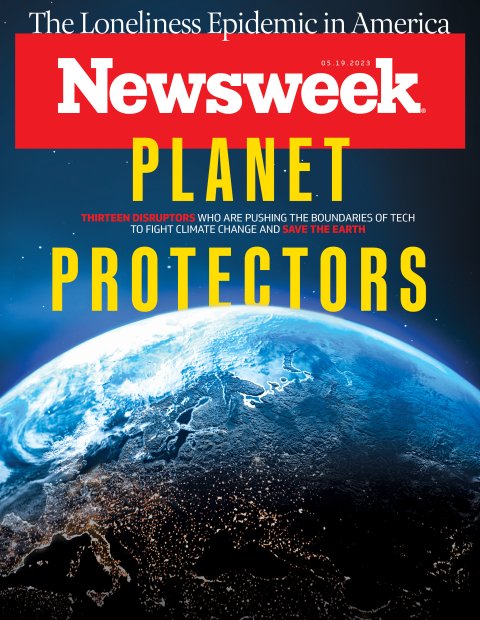The latest in a series of dire warnings about the dangers of climate change came this March when a prominent United Nations panel of experts flagged that the world is likely to pass a dangerous temperature threshold within the next 10 years. Unless countries take immediate, drastic action to reduce dependence on fossil fuels, global warming will reach catastrophic levels by the early 2030s, the widely circulated report from the U.N. Intergovernmental Panel on Climate Change said. The likely result: ever-worsening weather disasters and related events—famine, extinction of some plant and wildlife species and the spread of infectious diseases—that could kill millions by the end of the century.
There is still time to avoid catastrophe, the experts said, but the window for action is closing quickly. Yet the reality is, few countries are on track to meet their existing goals to address climate change, let alone seem willing to pick up the pace to save the planet.
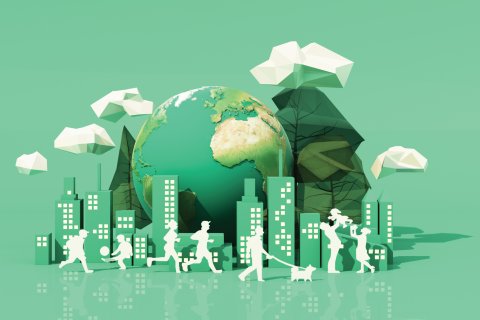
There is, however, one bright note in this otherwise gloomy picture: Where governments around the world are failing to act or at least act fast enough, individual innovators are stepping up to try to fill the breach. These disruptors are pushing the boundaries of technology in creative ways to find solutions to the climate crisis and other, often related, environmental challenges. And they are often doing so in ways that not only help protect the planet but also make life a little easier, safer and more affordable for the people living on Earth as well.
On the following pages you will meet 13 of these visionaries, the first group in a Newsweek series focusing on Great Disruptors—our name for innovative agents of change who are using technology in new and creative ways that have the potential to profoundly impact and, hopefully, improve our lives. It's a project that has been many months in the making, with nominations solicited from more than 100 experts in a variety of fields in addition to research by the Newsweek staff, who combed the work of universities, tech incubators, venture capital firms, futurists and other tech experts and organizations to identify worthy candidates.
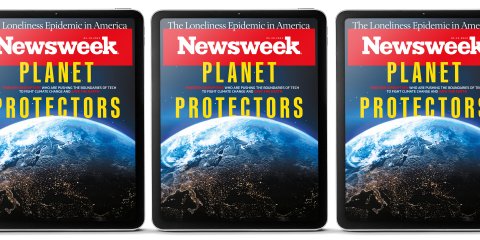
The projects and areas of expertise among the honorees who made the final cut are diverse. But they have this in common: All of these Great Disruptors are using technology in a way that is either already driving fundamental, transformative change in their field—typically, with measurable, real-world results—or has clear and demonstrable potential to do so.
The other common denominator: All are motivated in their work by a genuine desire to do good—to help solve a problem of global proportions on their own smaller scale or to improve the lives of people and communities in need. They are passionate about their mission. And while their work is defined by often breathtaking science and technology, the truly critical X factor in their great accomplishment is their humanity.
We hope you find their work and their stories as inspiring as we do.
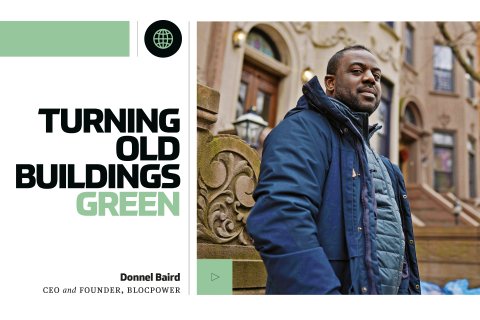
Donnel Baird says the first wake-up call came when he was a little kid, living with his family in an unheated apartment in New York City. To get through a cold winter night, they turned on the gas oven to keep warm and then opened the windows so they wouldn't suffocate.
There had to be a better way. The air at home was toxic, and—especially important to Baird today—all that wasted heating fuel was not helping the climate situation. Baird went to college and business school, worked on President Barack Obama's Better Buildings Initiative to increase energy efficiency, and then started BlocPower, a company that retrofits aging urban buildings with high-efficiency heat pumps, better insulation and lighting, often powered by solar panels instead of gas or oil.
"We can now electrify, almost fully decarbonize buildings and totally move them away from fossil fuels," says Baird. "That's something we could not do just seven years ago, but now we can because of improvements in this new hardware."

Since its founding in 2014, BlocPower has refitted more than 1,200 buildings in New York City—old brownstones, high-rise condos, commercial buildings and drafty churches—and will likely double that number in the next year, says Baird. It is expanding nationwide to Atlanta; Denver; San Jose and Menlo Park, Caliornia; Ithaca, New York; Cambridge, Massachusetts, and other cities. Baird says he expects they can upgrade the heating for 30,000 buildings within five years. His company has become a model, taking steps against climate warming that engineers have talked about for decades.
Technology is making a big difference: Cloud computing and analytic software allow engineers to model and monitor a building's energy use with high precision, making decisions about where improvements will be most effective. The greatest need is often in the poorest neighborhoods—in decaying old buildings where energy improvements can make the most difference.
"That old furnace in the basement is, like, guzzling oil," he says. "These buildings that have been neglected are really magnificent opportunities to save money on your energy costs, because they are so wasteful."
But the savings can come at a cost—someone has to pay the up-front bills for all those upgrades. Government tax breaks and subsidies can make a major difference, but they can't do it all. Baird has attracted support from Microsoft and Goldman Sachs, Amazon's Jeff Bezos, Google's Eric Schmidt and city agencies including New York, Philadelphia and Oakland. His company gives customers long-term leases on new equipment, with monthly costs at least partly offset by the fuel they stop buying.
The workers who install those heat pumps might come from BlocPower's Civilian Climate Corps, a program Baird started in cooperation with the office of New York City's mayor. It has trained more than 1,700 people so far as mechanics and technicians. The city says about 80 percent of them were previously unemployed or struggled to find regular work, often because they had criminal records. Many of them came from neighborhoods with high rates of gun violence. The climate corps gives them new skills, doing the technically complex work of transforming a building's power system.
"You want to take the steel gun out of someone's hands and put a steel screwdriver in their hands," said New York Mayor Eric Adams in October. "A majority of the participants are Black and brown, communities that have historically been left out of the emerging, profitable, green sector."
Climate change remains a tough political issue in Washington, D.C. Baird says his answer is to push the policymakers to the extent he can and, in the meantime, put people to work. Replacing the heating systems in America's buildings, he says, could reduce the country's greenhouse emissions by 20 to 30 percent. He says America could do it in three to six years.
"Nuclear fusion is great. Nuclear fission is great. They're very exotic and sexy, and we do need people to work on that," he says. "But we also need people to invest in the gritty, grimy realities. There are 100 million buildings across America with fossil fuels trapped in their basements." —Ned Potter
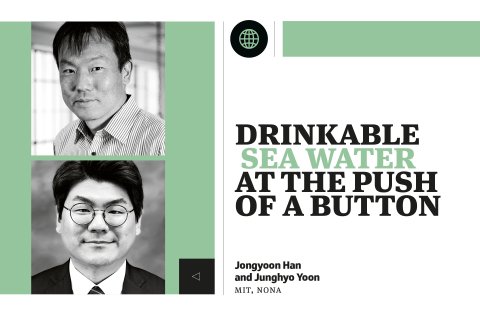
Dozens of different techniques exist to remove salt from ocean water so humans can safely drink it. Most of those methods, however, require large-scale commercial facilities to produce the drinking water, making the technology inaccessible to remote, resource-strapped communities and inappropriate for use by individuals. Now MIT electrical and biological engineering professor Jongyoon Han and MIT research scientist Junghyo Yoon are poised to change all that with their development of a new desalination method that is portable, easy to maintain and requires no additional chemicals, filters or skilled operators—delivering safe drinking water at the push of a button.
Han and Yoon's suitcase-sized device requires less power than a cell phone charger to run and produces clean drinking water that exceeds World Health Organization standards. And because it separates viruses, bacteria and salts using an electrical current generated by solar energy rather than filters as most other portable desalination units currently do, it also cuts the maintenance work and supplies needed to continue operating.
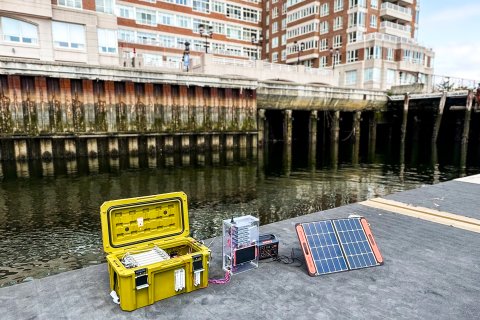
To get their tech from the lab to the public, Yoon launched the company NONA in 2022, bringing on Bruce Crawford as CEO, with Han acting as part of the scientific advisory board. Already more than 700 people and organizations, ranging from recreational boaters and sailors to the military and emergency preparedness groups, have joined a preorder waitlist to receive one of its portable desalinators. Yoon expects the devices, which are capable of producing 10 liters of clear water an hour from seawater, will be available in mid-2024 for $7,000.
"If our portable desalination device gains mass adoption, our world will look different," says Han. "Families living in resource-limited areas will no longer be vulnerable to water shortages. Humanitarian relief efforts in the wake of natural or man-made disasters will be much more efficient and sustainable. The use of fossil fuels to clean and desalinate water will be reduced as portable desalination systems enable decentralized, off-grid water supplies." —Kerri Anne Renzulli
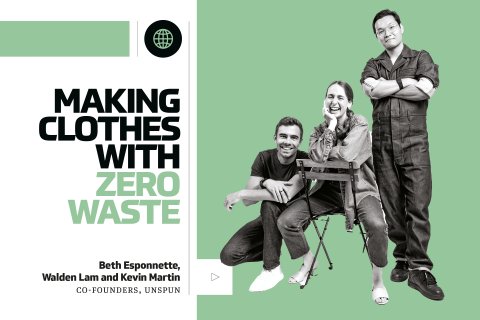
When Beth Esponnette began working in the fashion industry, she was disappointed to see that "we haphazardly make products" and found it silly that many manufacturers were still largely guessing what people will actually buy. As a result, companies overproduced garments, creating needless waste and environmental pollution. So, in 2015, she began her own company, Unspun, with co-founders Kevin Martin and Walden Lam, that would avoid those pitfalls by making on-demand custom clothing tailored to a buyer's body using a 3D-body scan.
For years, though, the trio worked on achieving an even bigger dream: creating a machine that 3D weaves yarn into clothing in just 10 minutes, leaving no scraps of unused material behind. "In conventional apparel making, we start with rolls of fabric, cut out desired patterns, and discard about 10–15 percent of unwanted fabric pieces," says Esponnette. "In 3D weaving, almost all the yarn will end up in the final garment."
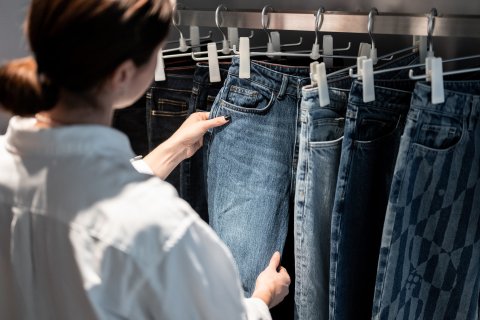
Unspun debuted its first 3D woven items using the founders' innovative tech (dubbed Vega) last year. Since then, the company has produced thousands of pairs of bottoms, hats, bags and other accessories in a test run for a large European retailer. But that number will swell this month when Unspun officially launches its first line of 3D woven products, focused on pants. The company has also begun work on another machine capable of weaving upper-body clothing like tops, jackets and dresses to expand its offerings in the near future.
Unspun doesn't intend to keep its novel production technique to itself. The company is in the process of building microsites around the world to localize 3D weaving production and has collaborations with other labels planned for the fall of this year as it aims to get as much of the industry onboard as possible. "Our goal is to reduce the global human carbon footprint by 1 percent, and the only way to realistically get there is to become a platform, working with forward-thinking brands to collectively clean up the industry," says Esponnette. —K.R.
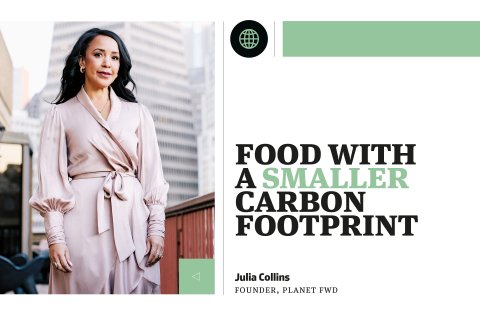
Julia Collins has been using technology to disrupt the food business for 16 years. Now she's taking on one of the planet's most pressing problems: how to feed a growing population in a sustainable way.
Collins got her start in the restaurant business by creating, with two friends, the New York-based chain restaurant Mexicue in 2010 and, in 2012, becoming director of restaurant development for specialty foods retailer Murray's Cheese. In 2015, she co-founded Zume Pizza, a bold venture that used robots to flip the dough, apply the toppings and bake the pies in mobile ovens en route to customers' front doors. Zume attracted more than $300 million from investors before going belly up, but it made Collins reportedly the first Black woman to found a unicorn company—a startup worth more than $1 billion.
Collins has since turned her entrepreneurial ambitions to environmental concerns. In 2019, she founded Planet FWD, a for-profit firm that leverages a large database of agricultural products' environmental impact in North America to analyze the product supply chains of big food brands and recommend high-impact improvements. These include changes like offsetting a company's carbon footprint with verified carbon credits, using renewable energy sources in factories and creating products from recycled and upcycled materials. Planet FWD has worked with more than 50 major brands, including Clif Bar, Blue Apron, Just Salad and Meati, to help them calculate their carbon footprints, reduce emissions and move closer to carbon neutrality.

In 2020, Collins founded another firm, Moonshot Snacks, which makes carbon-neutral crackers from wheat grown on regenerative farms. Patagonia Provisions, the food and beverage division of outfitter Patagonia, acquired it in March 2023.
In addition to running her own companies, Collins is an angel investor and an adviser to Launch with GS, a Goldman Sachs venture that "aims to increase access to capital and facilitate connections for women, Black, Latinx and other diverse entrepreneurs and investors," according to its website. That dovetails with Collins' main goal: to help other women of color get the support and resources they need to also become unicorn founders. "What has always been important to me is making sure I'm not the last and not the only." —Meghan Gunn

As a child, Jacqueline Claudia used to color in pictures of rivers using a red crayon because "that was my reality growing up in a coal mining town, Patton, in western Pennsylvania," she says. The toxins that surrounded her hometown and the cancerous impact they had on the health of her community led her to want to help find a better way to determine the health and environmental costs of everyday products—one that doesn't require the cruelty of animal testing traditionally used to make those assessments.
"It used to be that toxicity could only be determined using lab tests and animals," Claudia says. "Humans have done billions of experiments over hundreds of years and recorded those results. Today, we can use this existing data and computers to simulate these tests with a high degree of accuracy—which is faster, cheaper and cruelty-free."
SmarterX, where Claudia is CEO, performs this computational toxicology assessment to help businesses test variations of their products and develop nontoxic alternatives; meet the standards set by different environmental regulations across the country; and figure out how to safely dispose of unsold products. The company, which was founded by current Chief Innovation Officer Charlie Vallely and former CEO Chris Ripley, is also now working on incorporating AI technology from OpenAI, including ChatGPT, into its system to further increase its efficiency in identifying potential risks.
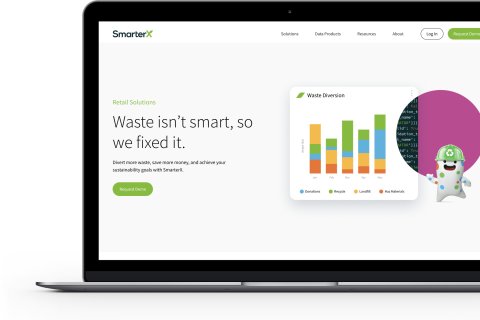
The company has also helped its partner businesses recycle or donate 93 percent of their unsold goods, which used to go to landfills. A key way it has accomplished this: connecting its platform with Feeding America, allowing the nonprofit's nationwide network of more than 200 food banks to see in real time which products are available for donation and claim the ones they need in the right quantities, so nothing goes to waste.
Twenty-five retailers, including Costco, Albertsons and Wegmans, as well as 1,870 individual brands, currently use the SmarterX platform to reduce their environmental harm. And, in September, California Governor Gavin Newsom signed a bill the company co-sponsored that paves the way for the state to begin accepting computational toxicology results over live fish testing ones, helping to end unnecessary animal harm.
"We are building the data and technology to measure the public health and environmental health impacts of products all along the supply chain," says Claudia. "We are moving toward a world where we can price these externalities into products. So hopefully we'll arrive at a place in the very near future where the best products for people and the environment are also the most affordable products." —K.R.
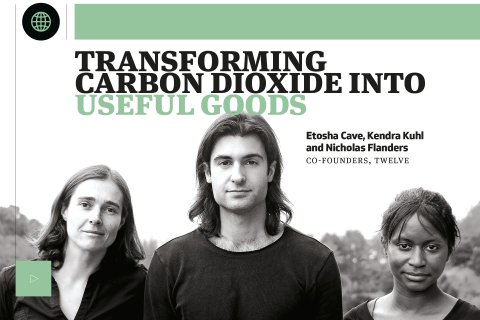
Twelve wants to make a whole host of products greener by changing where the carbon used in their production comes from—taking it from carbon dioxide captured in the air instead of from the ground in the form of fossil fuels. "If we can take the fundamental carbon molecule and put new atoms around it, such that it can be useful in industry," says co-founder Etosha Cave, "we can fundamentally shift what's happening with our atmosphere and what's happening with climate change."
Or, as her fellow co-founder Kendra Kuhl puts it: "Changing carbon changes everything."
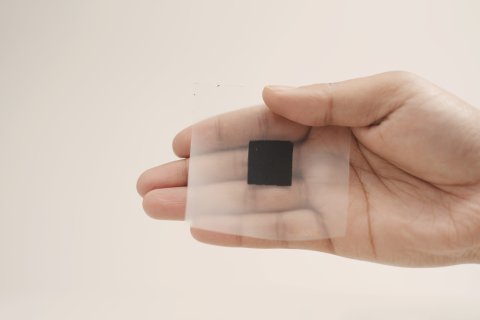
To accomplish this transformation, the company created a catalyst that breaks down carbon dioxide captured from the air into smaller atomic bits, such as carbon and oxygen, using water and electricity to recombine the elements and form other carbon compounds that make up the basis of a wide range of chemicals and fuels. Co-founder Nicholas Flanders likens the technology to an industrial form of photosynthesis, the process by which plants use carbon dioxide, water and sunlight to create oxygen and energy in the form of sugar.
Twelve's carbon transformation system can be added to existing manufacturing processes and its end products used as a direct replacement for standard petrochemicals. That allows other companies to cut their reliance on fossil fuels in production with little modification to their existing methods of operation.
"By sourcing carbon from carbon dioxide instead of fossil fuels, we can drastically reduce our emissions while keeping the products we know and love," says Cave.
Brands are taking note. Twelve's chemicals are currently being used to produce Mercedes-Benz car parts, ingredients in Tide detergent and a line of Pangaia sunglasses. Twelve also created its own sustainable aviation fuel, E-Jet, which has been tested and backed by the U.S. Air Force. Thanks to a partnership with Alaska Airlines and Microsoft, it is also working on bringing that fuel to use on commercial flights. Meanwhile, Twelve's sustainable marine fuel, E-Marine, has a similar deal with Virgin Voyages cruise line to explore using it to power their ships. —K.R.
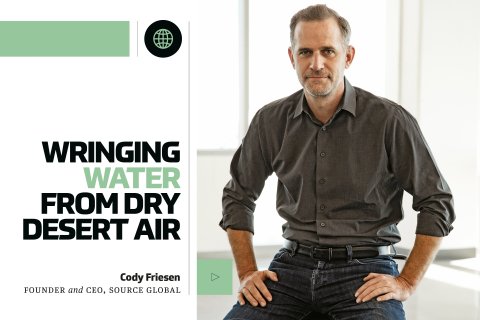
Cody Friesen grew up in the American Southwest, where frequent droughts mean that clean drinking water is often hard to get. For instance, members of the Navajo Nation in Arizona drive hundreds of miles to Flagstaff or Gallup, New Mexico, to fill their containers, and residents in Texas colonias—unincorporated communities without modern infrastructure—are left without water when local rivers dry up during droughts. Friesen went on to get his Ph.D at MIT, join the faculty of Arizona State University and, by 2014, had patented a rechargeable battery for remote electrical grids. Then he got the idea to use the technology behind renewables to help people cope with water scarcity.

The result is the Hydropanel, an off-grid device that can produce clean drinking water from the dry desert air of the American Southwest. It has a solar-powered fan that blows air over a "hygroscopic" material, which absorbs water molecules, generating a trickle of clean drinking water.
Friesen's startup, SOURCE Global, manufactures the device and has raised almost $270 million from investors, including Bill Gates' Breakthrough Energy Ventures, Microsoft's Climate Innovation Fund and BlackRock. A two-panel unit can fill 72 to 96 water bottles each week, sells for about $4,000 and is expected to last 15 years. The panels are now being used in 52 countries, including the Marshall Islands, where rising sea levels have driven a huge increase in water contamination; in a school in drought-plagued New South Wales, Australia; by the Westin Resort & Spa in Fiji to fill water bottles for guests; and by an orphanage for refugees in Syria.
"We have the potential to be a generationally important company," Friesen says, "one that fundamentally improves humanity's access to clean drinking water, addresses the changing climate and makes communities more resilient." —M.G.
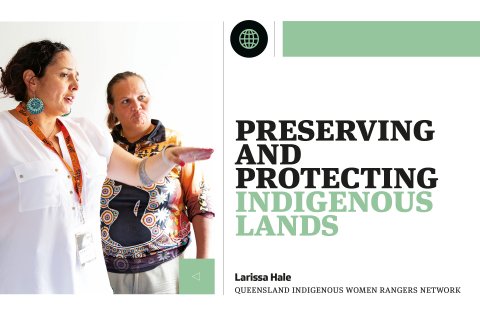
The Great Barrier Reef in Australia means more to Larissa Hale than just another tourist destination under threat from climate change. To her and her band of activists, it's their ancestral homeland. The Yuku Baja Muliku people have lived there for tens of thousands of years, spearing fish along the reef from canoes and building rock shelter refuges to protect from extreme weather.
In 2006, after a decades-long battle with Australia, the government named the Yuku Baja Muliku people as Traditional Custodians of Archer Point, the area that borders two of the country's World Heritage areas: the Great Barrier Reef and the Wet Tropics. Hale established the Yuku Baja Muliku ranger program in her hometown in 2008 to give native people official leadership positions in managing the environment.
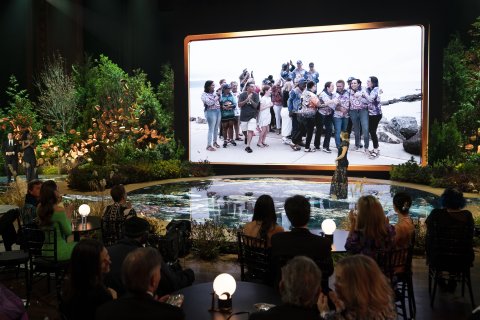
Noting the lack of native women rangers regionwide, in 2018 Hale went bigger and created the Queensland Indigenous Womens Ranger Network, now more than one-hundred strong. Using a combination of ancestral knowledge of the area's many ecosystems as well as advanced technology such as drones, the rangers manage bush fires and protect threatened species, like the turtles whose food source, seagrass, was wiped out by a cyclone. The ranger network is funded by the country's Department of Environment and Science, World Wildlife Fund Australia, Queensland Parks and Wildlife Service and the Federal Government Office for Women, among others.
In December 2022, Hale and her team won the prestigious Earthshot Prize, an initiative founded by England's Prince William and the actor and environmentalist David Attenborough to award five £1 million grants to individuals and organizations committed to environmentalism, with the goal of scaling up their work. Hale and her rangers plan to use the money to quadruple their number and foster a worldwide network of Indigenous women who can combine First Nations knowledge with modern tools to repair critical ecosystems from Hawaii to Tanzania. "This place has always been our home, but today we risk losing it and the unique culture that has existed here for millennia," Hale said in a statement: "Our Women Rangers Network exists to protect our home and continue our traditions." —M.G.
